CLASSIFICATION OF JAPANESE CATTLE
The beef cattle in Japan are classified into two categories, indigenous and non-indigenous cattle. The Japanese Black, Japanese Brown, Japanese Shorthorn and Japanese Polled are the four cattle breeds that are indigenous to Japan and collectively called ‘Wagyu’ (Sasaki, 2001). The majority of the non-indigenous cattle are represented by dairy breeds and corresponding crossbred animals. More than 99% of the dairy cattle are Holsteins (Minezawa, 2003).
In Japanese cattle, both genetic (Namikawa, 1980) and morphological (Ogawa et al., 1989) studies illustrates that native Japanese cattle are Bos taurus and are representative of the “Turano-Mongolian” type (Felius,1995).
HISTORICAL ORIGINS OF WAGYU CATTLE
The historical origin of Wagyu cattle has been documented around the second century A. D. when cattle migrated from Northern China via the Korean peninsula to Japan. This migration movement was accompanied by the introduction of rice cultivation; therefore, at the beginning, cattle in Japan were not only used for breeding purposes but mainly as draft animals (Sasazaki, et al., 2006; Nishinakagawa et al., 1991). It was a common practice to use these draft cattle for farm laboring and transporting many different types of loads, and also for hackeries (cattle-drawn car) for nobles of the imperial family and aristocrats in Kyoto during the Heian period.
Before the Meiji era (pre-1868) these cattle were not uniform in type, were small, horned, late-maturing and their coat colors were quite varied, including brown, black, and black and white, however, black color was the most popular among cattle farmers (Cottle et al., 2014). Several inbred strains based on dam lines were built up by breeders, mainly wealthy farmers, and cattle dealers referred to as "Tsuru" (Hirooka, 2014).
After the Meiji restoration in 1868, eating beef became part of a popular culture in Japan due to the Westernization policy of the new government. To fulfill the increasing demand for beef, the genetic improvement of local cattle breeds, Japan became extraordinarily active in various region Japan. Several foreign breeds, including Simmental, Brown Swiss, Devon, Shorthorn, Ayrshire, Holstein and Aberdeen Angus were imported by the Japanese central government and crossed with local Japanese breeds by local prefectural governments. The best-imported males and females, approximately 1,690 head, representing 65% of total imports were used for breeding among them and approximately 910 head were bulls used for crossing with existing native cattle (Namikawa, 1985).
These imported breeds were extensively crossed with the native cattle for genetic improvement of the indigenous breeds. The results were not always successful: crossbred cattle typically had improved growth and development, broad and deep hindquarters a better milking performance, but they were inefficient for cultivating rice fields and produced low meat quality (Cottle, et al., 2014; Obata, et al., 1996). At that time, Japanese cattle were not subject to improved techniques for milk or meat production before the mid-1950’s.
To standardized anatomical traits and overall quality of the cattle, registration systems were implemented in each prefecture around 1918 whereby cattle were selected and uniformly improved. After this period, in 1950 the “Law for improvement and Increased Livestock Production” was enacted. The law stipulated that the government was required to establish specific goals concerning the improvement and propagation of livestock (Minezawa, 2003). As a result, cattle breeders began to improve and promote their own breeds without crossbreeding within prefectures.
The unique characteristics of Wagyu cattle were then established as found today and cattle raised among prefectures were classified mainly into breeds according to their phenotype and recognized as such. In 1937, the Japanese Black breed was officially established and has been selected for improved meat production for nearly 60 years (Morita et al., 2000). However, the introduction of foreign breeds and implemented breeding strategies made in each region, diminished most of the genuine Japanese native cattle to a level of trace proportions (Statistical Data Related to Livestock Improvement, 2001) and only Mishima and Kuchinochima cattle remained in two islands, Mishima and Kuchinoshima from the Yamaguchi and Kagoshima Prefectures, respectively.
Mishima-Ushi Cattle
Mishima is a small Island (7.8 km2) located in the Japan Sea, 45 kilometers from the main island of Japan. It is characterized by its restricted flat area; therefore, rice fields are small and terraced. The first official record indicated that 350 Mishima cattle died due to a Rinderpest outbreak in 1962 (Minezawa, 2003). The herd was re-built and by 1739 they were 433 officially recorded and approximately 400 head had been kept up to the Meiji Restoration in 1898.
Mishima Island cattle are the oldest breed of native Japanese cattle and were declared a “national natural treasure” in 1928 (Yoshitaka, et al., 2008). Thus, they are considered as the original type of Japanese Black cattle. Mishima cattle have been kept as farm animals and for in situ conservation. However, total numbers have been declining and there were 300 Mishima females kept up to 1961. Total numbers further decreased after that and only 33 females remained in the middle of the 1970’s (Furukawa et al., 1997). The number of females increased to nearly 100 in 2002 (Minezawa, 2003).
Mishima cattle are characterized by their small skeletal frame, small horns, black coat color and narrowed body type in comparison to the modern Japanese Black. The average for wither height, chest girth and body weight of a mature Mishima female (60 months old) are 112.8 cm, 152.1 cm, and 261.1 kg, respectively (Harada, et al., 1996). Mishima steers were evaluated by Morita et al, 2000 and reported an average weight of 517 ± 20 kg (n=4) of body weight at 35.8 ± 0.5 months of age. Mishima steers generally weigh less compared with fattened Japanese Black steers at 26 months of age (Gotoh et al., 2009; Al-Brecht et al., 2011).
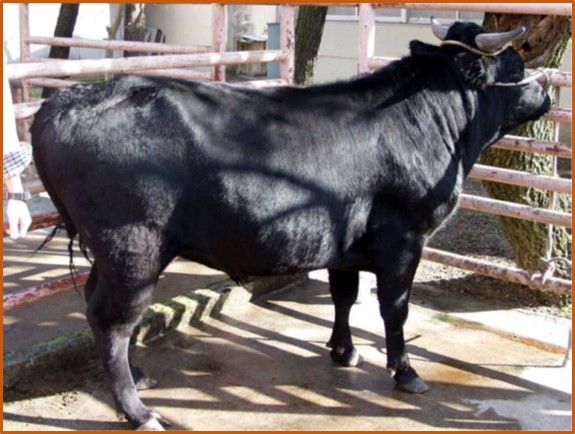
Mishima-Ushi Bull
Kuchinoshima-Ushi Cattle
The Japanese native cattle Kuchinoshima-Ushi has long been bred on Kuchinoshima Island in the Tokara Archipelago of Kagoshima Prefecture, Japan.
Kuchinoshima-Ushi cattle were used mainly as pack animals, characterized genetically as having a lean body composition, small skeletal size (approximately 500 kg and 300 kg for adult males and females, respectively), wide chest, narrow waist and horns (Kawahara-Miki, et al., 2011). The coat color is mainly black with a white spot in the belly area and/or four limbs and occasionally a brown coloration is present (Minezawa, 2003).
Kuchinoshima Island is one of the Tokara Islands, belonging to Kagoshima Prefecture. The island has a land mass of 13.33 km2 and is the northernmost inhabited island in the Tokara archipelago with a population of 140 persons (Tokara Village, 2010). Its local climate is classified as subtropical, with a rainy season from May through September.
Kuchinoshima Island’s historical records written in 1727 indicated the existence of domesticated cattle (Tomita, 1996). However, Hayashida and Nozawa (1964) suggest that these cattle were descendant from cattle of Kagoshima between the years of 1918 and 1919.
The population size of Kuchinoshima-Ushi cattle was approximately between 44 and 66 head in 1999. However, there were two other Kuchinoshima cattle populations in 2001 conserved at Kagoshima University and Nagoya University with 20 and 24 head, respectively (Minezawa, 2003).
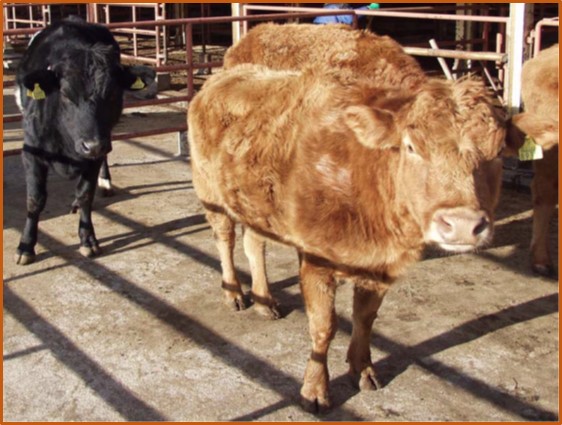
Kushinochima-Ushi Cattle
WAGYU CATTLE - AN INTEGRAL PART OF JAPANESE COMMUNITIES
Japanese cattle are an integral part of rural Japanese communities; deeply respected and appreciated as part of their daily life. There are many traditional events that are still held in relation to their revered cattle such as “Ushioni” at the Warei shrine, the cattle festival at Uzumasa, and sacred rites associated with field work (Tsuda, 2001).
A unique museum was founded in Japan to know and appreciate cattle and to look at the close relationship between them and humans for many years. The museum is called “The Cattle Museum” and was founded in 1955 at the Maesawa, Oshu city in Iwate Prefecture. The museum is located 500 km north of Tokyo and commands a nice view of the Kitakami River and surrounding mountains. Maesawa is famous for its fine quality beef and Maesawa farmers have been awarded the highest prize for Japanese meat quality at the annual Wagyu competition in Tokyo eight times in the last 20 years.
The museum exhibits 1,200 specimens out of a collection of 10,000 cattle related objects, which have been collected from Japan and all over the world. The exhibitions cover biology, animal industry, and ethnic materials related to cattle.
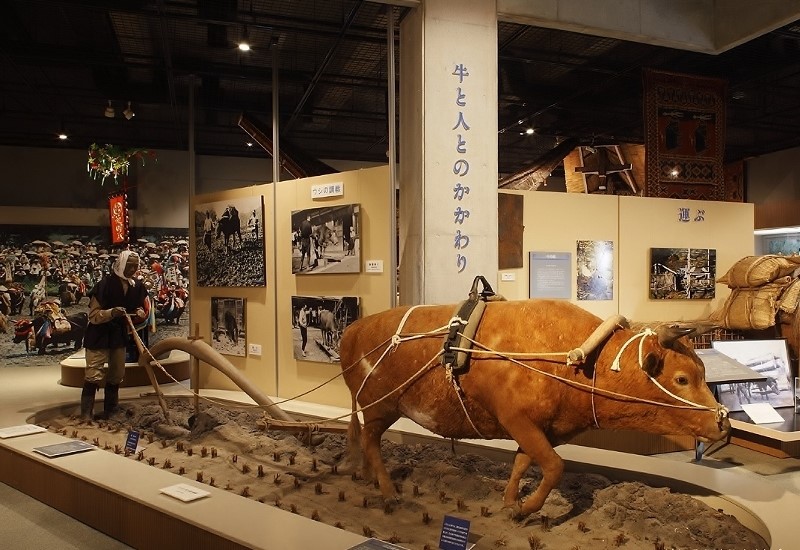
The Cattle Museum
BEGINNING OF WAGYU CATTLE OUTSIDE OF JAPAN
The famous world-wide brand name Wagyu of today includes not only Fullblood or Purebred Black and Red Japanese cattle produced in Japan, but also crossbred Japanese Black and Red cattle produced in foreign countries such as Australia or the United States.
These cattle were originally imported in 1976 to the United States. This shipment consisted of two Tottori Black Wagyu (Mazda and Fuji) and two Kumamoto Red Wagyu bulls (Judo and Rueshaw).
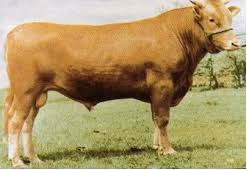
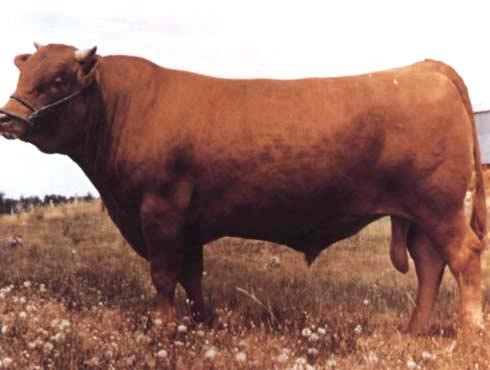
RUESHAW
In the 1990's there were several importations of superior Wagyu genetics into the Unites States. Most of these cattle were Black but a few were Red Wagyu. These imports have the greatest genetic influence on the U.S. national Wagyu herd and in many other herds around the world.
